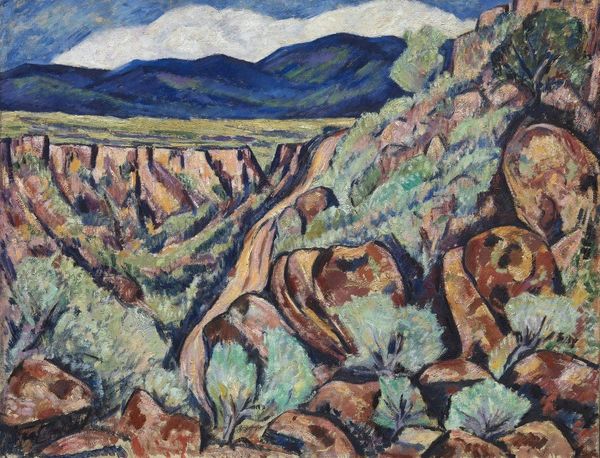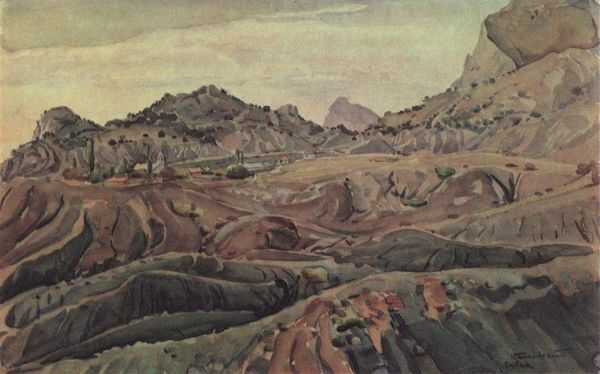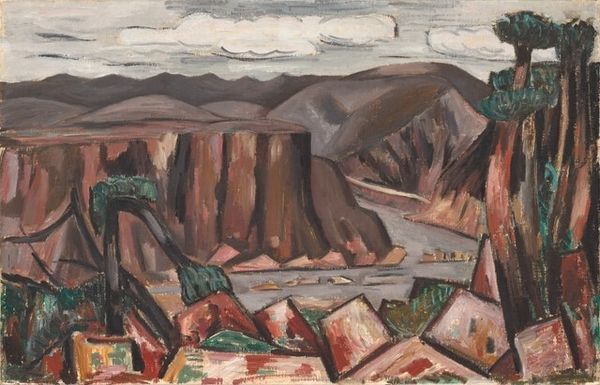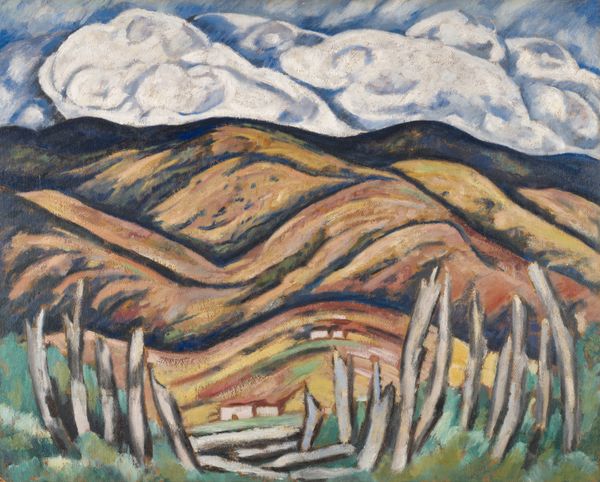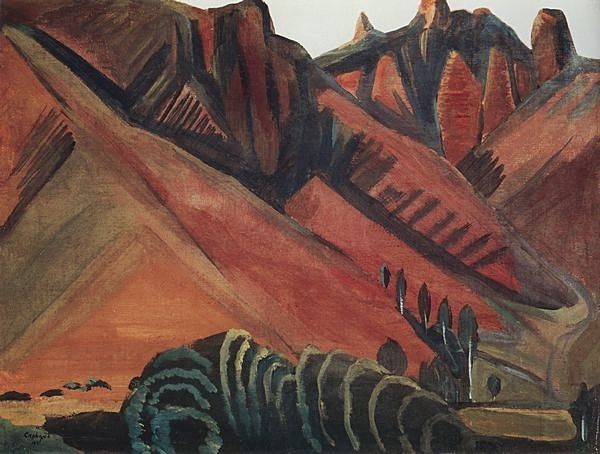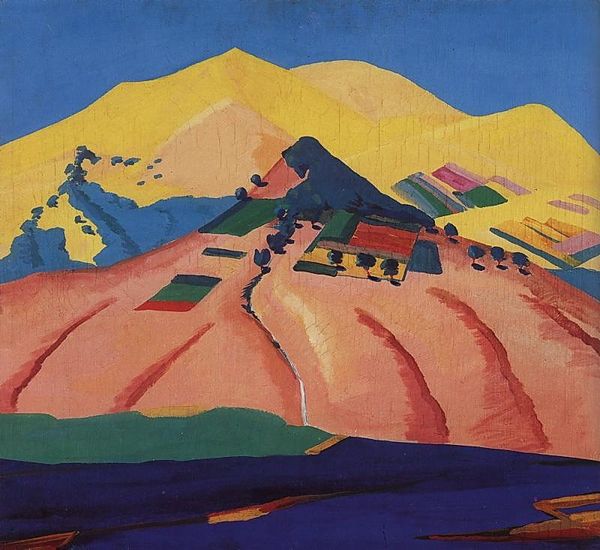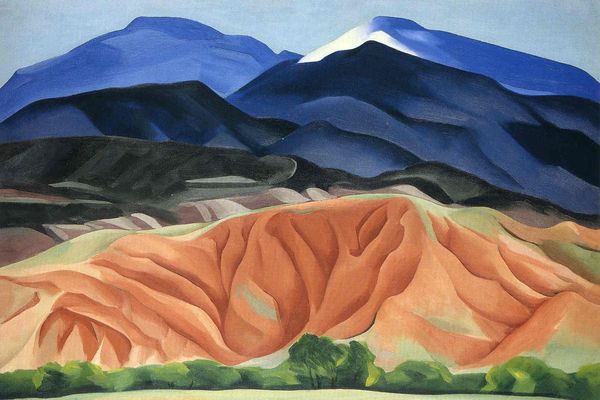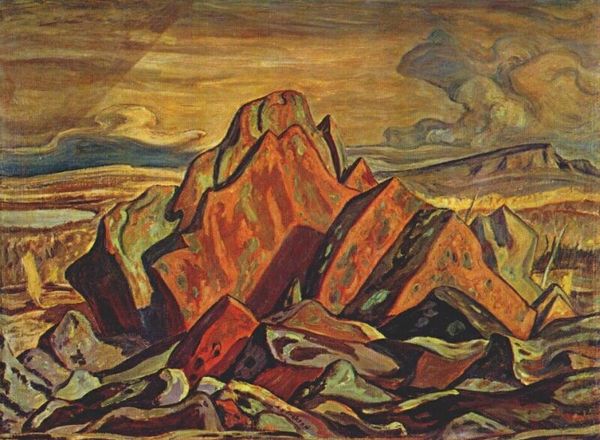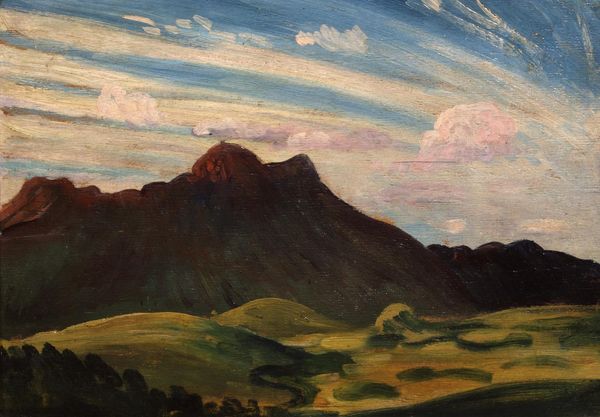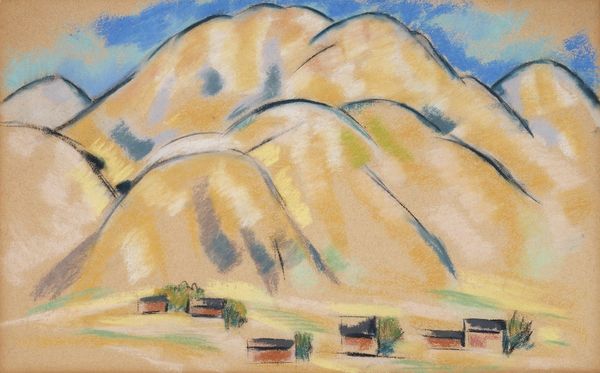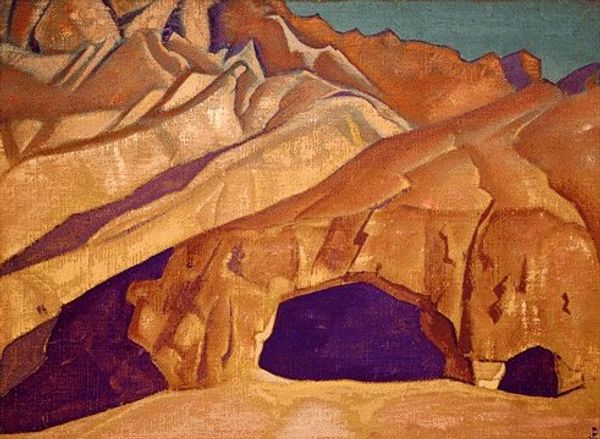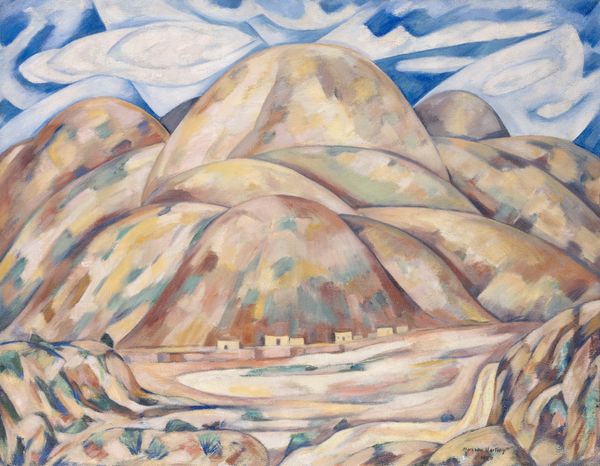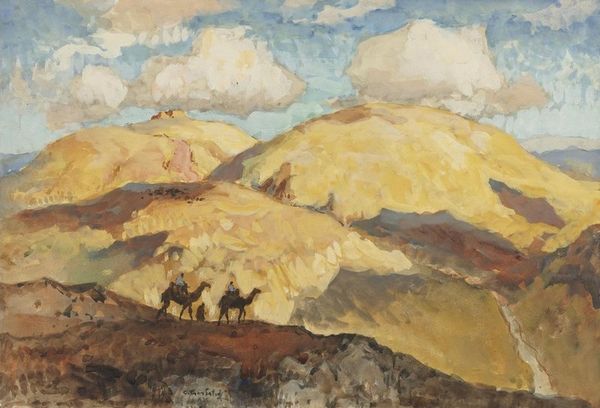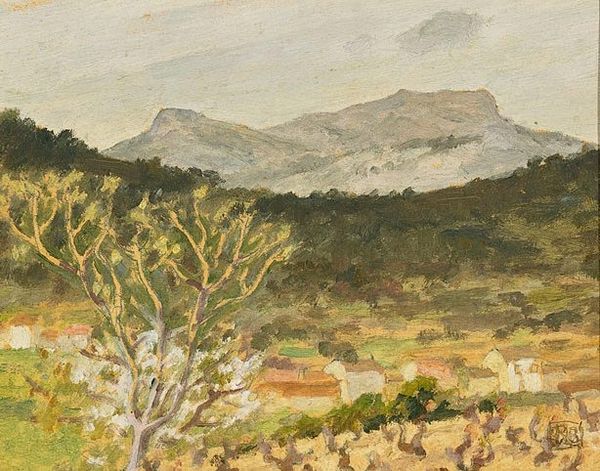
Copyright: Public domain
Editor: So this is Marsden Hartley’s “Landscape, New Mexico,” painted in 1920 with oils. There's a strong sense of the vastness of the landscape but also this real stillness. What do you see in this piece? Curator: The overwhelming symbolism in this landscape revolves around themes of isolation and the search for spiritual connection in the American Southwest. The solitary mountain, almost looming, could represent a kind of personal monument, a grounding force, perhaps. What feeling do you get from those cumulus clouds gathering overhead? Editor: A bit ominous, maybe a symbol of the unpredictable nature, the changing forces... Is it typical to read landscape this way? Curator: Absolutely. Hartley's time in New Mexico was a period of seeking—seeking new forms of expression, but also a deeper understanding of self. The simplified forms, almost geometric in their nature, point towards a stripping away of the superfluous, a distillation of the landscape to its essence. Do you think he found it? Editor: That’s a great question! I do feel like I get a feeling of something essential in the simplified shapes of the rocks. There’s such raw simplicity in his style. So, maybe the geometric qualities express a raw connection. Curator: Exactly. The image is potent, not just as representation of place, but a representation of a personal journey, full of introspection and connection to the sublime. This is landscape imbued with cultural and emotional weight, reflecting back the universal human search for meaning. Editor: Wow. It definitely reframes my whole understanding of the piece to consider it not just scenery, but a window into his spirit. Curator: Precisely. And that’s the ongoing dialogue we have with art – a reflection of our collective spirit over time.
Comments
No comments
Be the first to comment and join the conversation on the ultimate creative platform.
